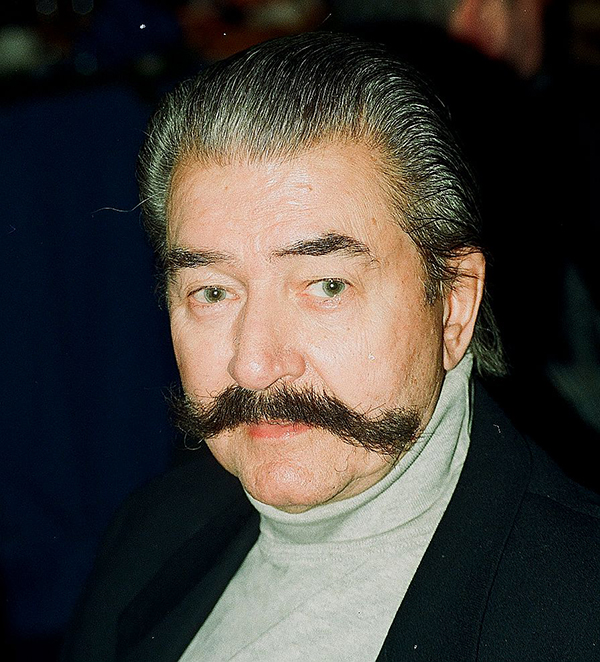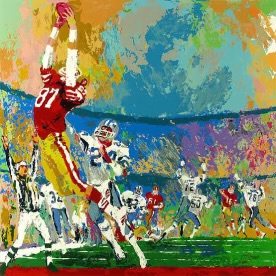
Widely considered one of the greatest contemporary artists of all time, LeRoy Neiman’s formidable artistic legacy is as enduring as it is magnificent. Born on June 8, 1921 to Lydia Serling and Charles Runquist, Neiman spent his youth in a proletarian neighborhood in Saint Paul, Minnesota, where both luxury and leisure were sparse. Neiman, who took the surname of his mother’s second husband, discovered his proclivity for drawing at a young age. While studying in a Roman Catholic primary school, he would etch ink tattoos on his classmates’ arms for a modest price, and even sketched advertising posters for local grocery stores to earn some extra pin money.
Neiman’s striking repertoire includes a varied mix of modern impressionist depictions, abstract serigraphs and his notoriously saucy illustrations for Playboy magazine. But the centerpiece and crowning glory of his artistic talent is undoubtedly his riotously colorful, dynamic depictions of sport and athletic activities. Neiman became something of a messiah in the world of sports art, a field few ventured into, which gave him the opportunity to push the boundaries and explore his unique Expressionist style of painting. He managed to capture the energy and exhilaration of a moment in any sports game, be it the anticipation before a pivotal shot, or the magnificence of an athlete poised for victory. The vivid, evocative color palette and his expertly defined, dynamic brushstrokes create a spectacle of energy, activity and animation.
Neiman has painted some of the world’s most famous athletes of all time, in some of the biggest events in the sporting world. As an official artist of the Olympiad, he depicted a series of Olympic Games. In his signature al fresco style, he illustrated the winter games in Squaw Valley in 1960, followed by the Olympic Games in Munich, Montreal, Lake Placid, Sarajevo and Los Angeles. He even developed a personal, lifelong friendship with boxer Muhammad Ali, and would draw pre-fight sketches of his matches for the New York Times Magazine.
And on the subject of camaraderie, it would be remiss not to mention the alliance between Neiman and Hugh Hefner, who at the time of their meeting had just launched Playboy Magazine. Hefner was commissioned to sketch an illustration accompanying a short story, which would later win the Chicago Art Directors Award. He was the mastermind behind the iconic Femlin, which became one of Playboy Magazine’s most recognisable symbols. Neiman became a permanent feature of Playboy magazine for half a century, depicting rakish illustrations and written columns, the most famous of which was his series titled “Man at His Leisure” which depicted affluent men in extravagant settings. In Neiman’s own words, “Playboy made the good life a reality for me and made it the subject matter of my paintings—not affluence and luxury, as such, but joie de vivre itself.”
Despite the glitz and glamor of the subjects he painted, Neiman never let his perspective be altered, always carrying a piece of the intrepid young boy from Frog Town, Saint Paul with him.
Image credit: John Mathew Smith & www.celebrity-photos.com from Laurel Maryland, USA, CC BY-SA 2.0, via Wikimedia Commons

